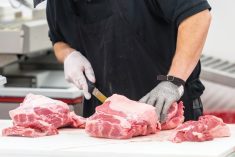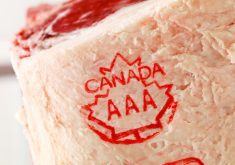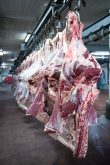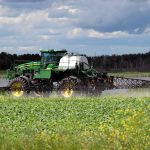While tariffs on agri-food products are declining around the world, non-tariff trade barriers are sprouting up like weeds, the Commons agriculture has been told.
“While we are seeing progress in lowering tariffs, non-tariff trade barriers are frequently waiting, or newly created ones are set in place to be the next wave of protectionism that we deal with,” said Dennis Laycraft, executive vice-president of the Canadian Cattlemen’s Association.
“Generally, there is some effort to try to cloak these efforts under some scientific precautionary excuse, when in reality political science and protectionism are really the root cause of much of this.
Read Also

CUSMA access key among other trade noise: Seeds Canada panel
Seeds Canada conference panelists say Canada needs to stay focused and wait as U.S. trade and tariff chaos develops, and a Canada-U.S.-Mexico Agreement review looms
“It used to be that the focus of trade and trade agreements was on tariffs, but now we are finding that non-tariff trade barriers need to be front and centre,” he said. “In addition to addressing tariffs, farmers are increasingly having to manage the impact of existing and new non-tariff trade barriers. These can take many forms, including non-scientific sanitary and phytosanitary requirements, delays in approvals for new crops from biotechnology or crop inputs, or additional business requirements asked of our Canadian exporters.”
Brett Halstead, president of the Canadian Canola Growers Association, said, “Each of these barriers creates uncertainty in our operations, impacting demand for our crops, the price we receive, and what crop inputs we can use. The added uncertainty of these risks impacts our entire business, from deciding what crops we will grow, where we ask questions like, ‘Will China buy our canola seed this year?’ to determining what seed or crop inputs we purchase and how we market our crops.”
Brian Innes, vice-president of government relations for the Canola Council of Canada, said, “There is an opportunity through free trade agreements to get solutions for these non-tariff barriers.”
Eliminating them will have benefits for the entire value chain, he said.
For seed developers and life science companies, it creates a more predictable investment environment, and that encourages more innovation. For growers, it means more options to control pests such as insects and weeds, and it means better access to new seed varieties. For exporters and processors, it means more predictability, and that means less risk and more value back to Canada, he said.
Laycraft said the battle with the United States over mandatory country-of-origin labelling is a classic example. COOL may return under the new administration in Washington and Canada has the tools from the World Trade Organization ruling to use if it does. Canada has “the right to retaliate should they put in place a measure like that again, and we would need to be able to stand prepared to do that.”
The Europeans have also been egregious in their measures to block meat imports including a ban on growth hormones and excluding meat hygiene from inspection from the equivalency agreement, he said. Then there’s the European insistence on inspecting each meat-exporting plant rather than the overall inspection system which most countries do.
He suggested the committee recommend an expanded role for Canadian Food Inspection Agency veterinarians and food safety experts posted abroad.
“They establish important trust in relationships, which helps prevent issues,” Laycraft said. “That’s always your best outcome — to stop something from happening or to resolve it quickly.”
CFIA also needs to establish a more even balance between its domestic and export interests.
Halstead said that last year China wanted a one per cent dockage level for canola seeds to prevent the spread of blackleg. Canada and most other countries allow a 2.5 per cent dockage.
“Based on the available research and science that was proposed, the Chinese rule was counter to the finding that showed that the threat of spread of blackleg through dockage was nearly non-existent,” Halstead said. “China, however, continued to push for reduced dockage levels.”
The move created immense and costly problems for canola growers before the government worked out a solution with China, he said. The solution required the involvement of every level of government, and sometimes that is what’s required, he said.
“If Canada is truly going to capitalize on the benefits of trade, we need to have continued and ongoing commitment to resolve barriers,” he said. “Relationships with trading partners must be managed, and addressing barriers must be a priority across government departments and at all levels of government.”
Innes said gaining foreign market access is a team effort and Canada has had success because they’ve worked together, both within industry and across industry and government. For example the market access secretariat at Agriculture Canada has helped deal with non-tariff barriers.
“Similarly, our industry has demonstrated that we can come together and work with government co-operatively to address these issues, but there is more to be done,” Innes said. “Non-tariff barriers are preventing our industry from growing, and trade agreements can help.”



















